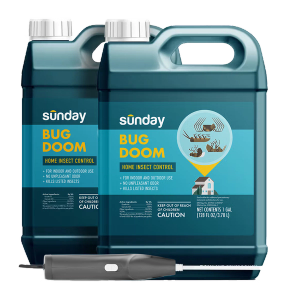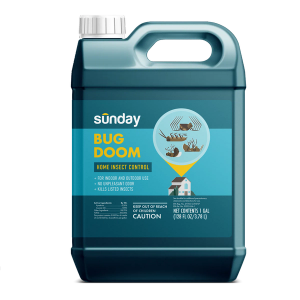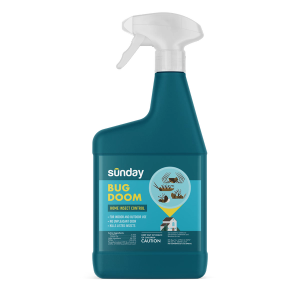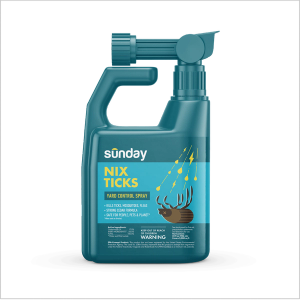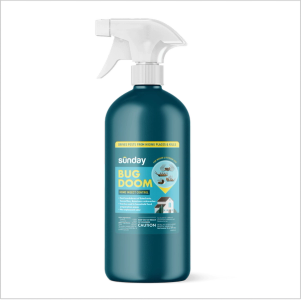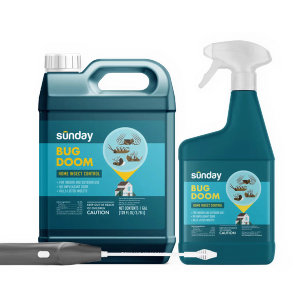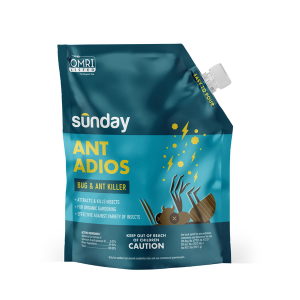Get to know crickets
Known for their chirping, these long-legged insects are found coast to coast during the spring, summer, and fall seasons (they love the 80–85° F range). Although crickets aren’t dangerous to people or pets, they can cause damage to household items, and their chirps can be a nuisance.
Like all species, these crickets are essential to our ecosystem, and only a pest when inside the home.
Sunday Tip:
Fun fact: Their famous chirps are actually made by male crickets rubbing their wings together to attract females.
How to ID common crickets
Despite over 100 species of crickets in the U.S., only a few are common pests in and around buildings. The most notorious are the house cricket (Acheta spp.), field cricket (Gryllus spp.), and camel cricket (Diestrammena spp.).
All adult crickets are about 1 inch long. Their bodies have three segments: a head, thorax, and abdomen. Crickets have six legs and two antennae.
House crickets
These are the lightest in color. Their bodies are yellowish-brown and vary in length from 0.75 to 1 inch.
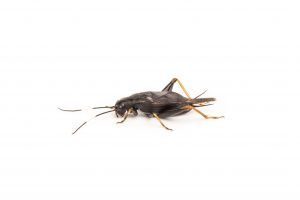
Field crickets
These are much darker in color with black bodies and long brown wings. They will vary in length from 0.5 to 1.25 inches.
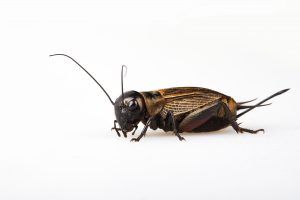
Sunday Tip:
The song of the field cricket is temperature-dependent. The tone and tempo drop with a drop in temperature. Count the number of chirps over 15 seconds, add 40, and you will have the approximate temperature in degrees Fahrenheit.
Camel crickets
These are the easiest crickets to identify because of their humpbacked appearance (hence their name), long jumping legs, lack of wings, and ability to jump sideways! Camel crickets range from light tan to brown, with darker brown bands covering their bodies. They are usually 0.5 to 1.5 inches in length.
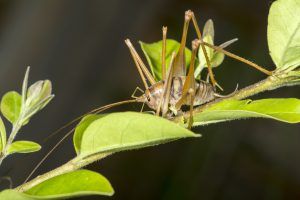
Cricket lookalikes
House and field crickets are often confused with cockroaches. To tell crickets apart from cockroaches, look for:
- The shape of their body. Crickets have cylindrical bodies, while cockroaches are flat and oval-shaped.
- How they move. Crickets will jump (not crawl) away if approached.
Sunday Tip:
Fun fact! People commonly mistake camel crickets for larger spiders.
Crickets are essential for lawn ecosystems
During summer months crickets will usually remain outdoors. Outside, crickets are beneficial. They eat the seeds of many weed species and break down organic matter (which results in nutrients returning to your soil). Crickets are also critical food sources for birds and amphibians.
When crickets become pests
Crickets only become pests when they enter the home. This happens by mistake or because they are looking for shelter during seasonal changes. Once inside, crickets will find a dark, warm place to live.
In addition to their chirping keeping you up at night, house and field crickets may feed on cotton, linen, wool, silk, and fur but are most likely to feed on fabrics soiled with either food or perspiration. Unlike other crickets, camel crickets are considered a pest for their presence alone since they don’t typically damage household items or chirp.
Sunday Tip:
Think you might have a cricket pest? House and field crickets are chirpers but if their songs don’t give them away, another indication of their presence is finding chewed clothes, furniture, or curtains.
How to prevent crickets from entering your home
Sunday utilizes an Integrated Pest Management approach to help you with crickets in your home. This approach relies on preventing, managing, and excluding pests, not immediate chemical treatment. You can avoid crickets by:
- Minimizing cricket habitat near your home. Eliminate rock piles, stacks of wood, overgrown vegetation, and general clutter.
- Install duller, yellow lights. Limit bright, white outdoor lights, which attract crickets to your home. Look for light under your garage door. If you can see the light, then crickets can get in.
- Sealing out crickets: To prevent entry, close openings around your home's foundation and seal any cracks or openings in doors or windows.
- Limiting access to food. Keep food in tightly sealed containers and clean spills as they occur.
- Cleaning up basement and garage spaces. Oftentimes, cricket and other critter carcasses accumulate in these areas. Those dry carcasses are an excellent food source for crickets and other household pests.
- Reducing moisture. Camel crickets love areas with high humidity. Reduce moisture with ventilation, a dehumidifier, or by creating moisture barriers.
How to control crickets
If you require extra treatment, Sunday has a full line of easy-to-use, bio-based solutions to solve your cricket concerns.
Bug Doom
Sunday’s plant-powered, biodegradable Bug Doom is a ready-to-use spray-on pest treatment for house and field crickets. It can be used indoors as a spot treatment or outdoors as a barrier treatment.
Ant Adios
Sunday’s Ant Adios can be used outdoors as a line of defense for perimeter protection to control house and field crickets.
Cited sources
Cricket Management. University of Arizona College of Agriculture.
House-Invading Crickets. University of Missouri Extension.







